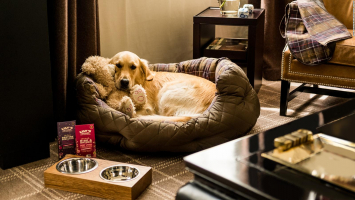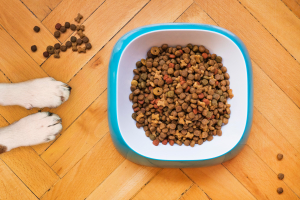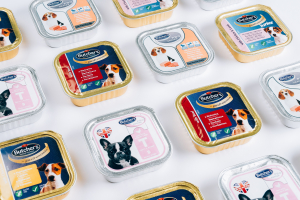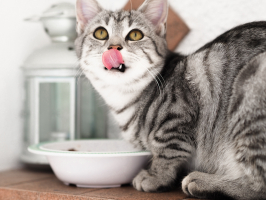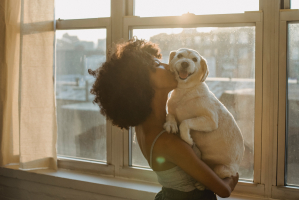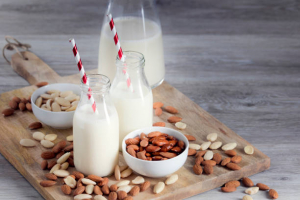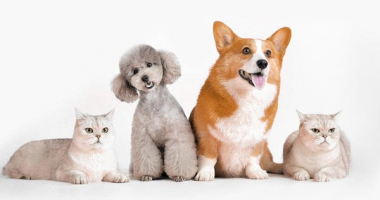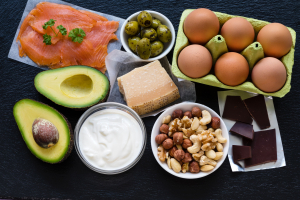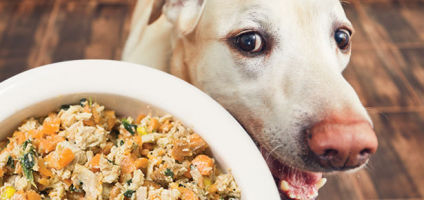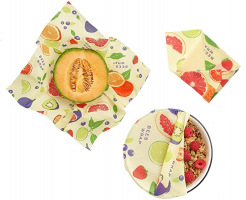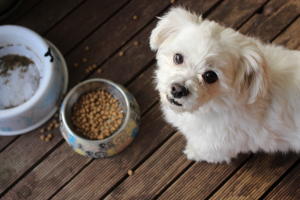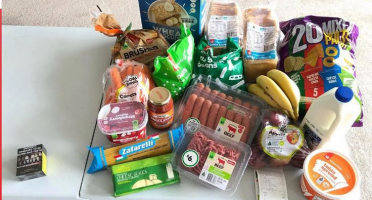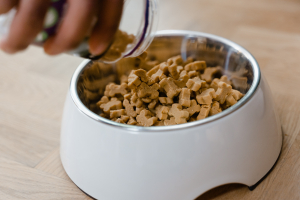Top 10 Best Pet-Friendly Houseplants
Houseplants are always loved by many people because of the aesthetic they bring to the house, but many species can be toxic to animals like cats and dogs. Pets ... read more...are pretty much unpredictable, and you never know when they might get a sudden urge to munch on a leaf or two of your beloved houseplants. Luckily, there are plenty of houseplants that are completely safe and non-toxic to your pets. Here are the top 10 best pet-friendly houseplants.
-
Want houseplants that are pet-friendly that also produce gorgeous blooms? Look for an African violet. As their name suggests, African violets are native to East Africa, stemming from the tropical rainforests of Tanzania and Kenya. In 1892, German colonial officer Walter von Saint Paul-Allaire identified these plants and sent seeds back to Germany. The genus came to be called Saintpaulia, though the plants have recently been re-categorized into a different genus, Streptocarpus. Despite their common name, they are not a type of violet, but they do produce vivid, violet-colored flowers.
African violet comes in a range of purple and pink hues are low maintenance and thrive without bright light. Keep the soil moderately moist, and water African violets by letting them soak up water through the pot's drainage hole to avoid damaging the leaves and petals. This flowering houseplant can brighten up even the smallest spaces because it stays less than 12 inches tall.
Appearance: Dark broad leaves, purple flowers
Light Requirements: Bright, indirect light
Difficulty: Easy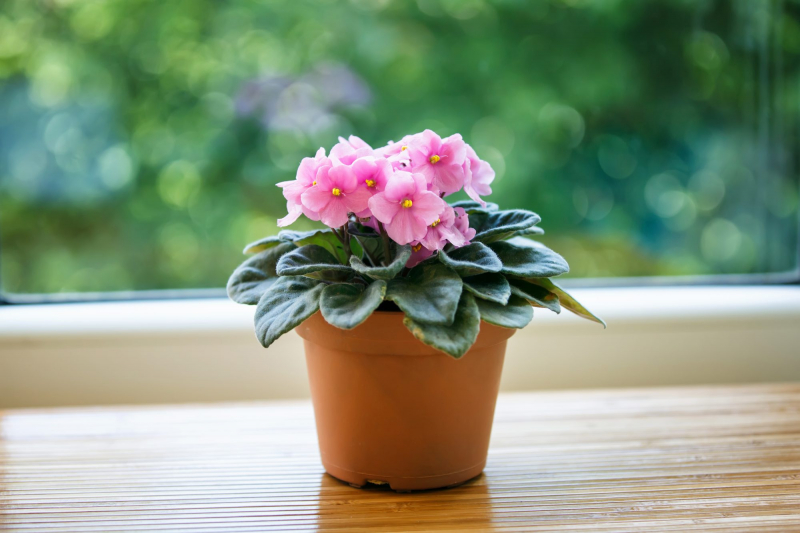
Via: Southernliving.com 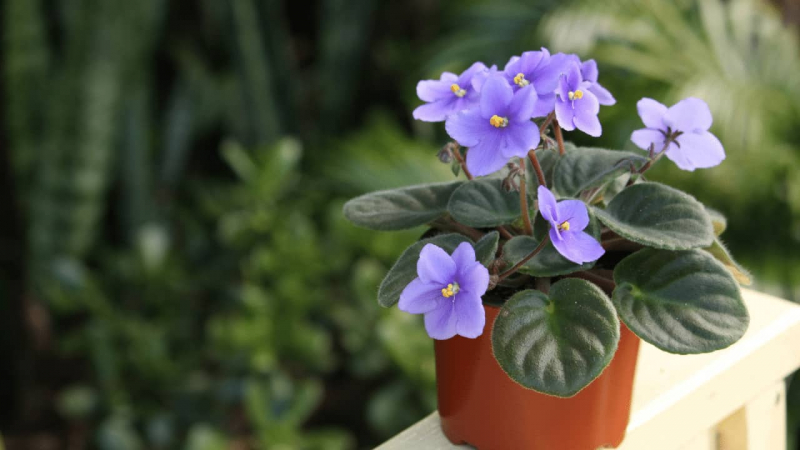
Via: Codai.net -
Air plants are native to the Americas, ranging from the southern United States to Argentina. In the wild, they use their roots to hang on the bark of trees, feeding on rainwater and bird poop they absorb through their leaves. There are more than 600 species and varieties of air plants, also called Tillandsias.
They usually have strap-like leaves that grow in a rosette pattern with new growth coming from the center of the plant. The foliage may be silver or green, spiky or fuzzy, and some produce flowers in shades of red, pink or purple that last from a few days to a few months. Most air plants are tiny, ranging from 2" to 12" tall, making excellent pet-friendly, low-maintenance houseplants because they don't need any soil to grow. They thrive in bright, indirect light with a quick soak in water about once a week. However, cats and dogs alike will find their spindly, grass-like leaves tempting to chew on so make sure you keep them out of reach.Appearance: Thin, stiff leaves covered in scales, fuzzy, gray-green appearance
Light Requirements: Bright indirect light
Difficulty: Easy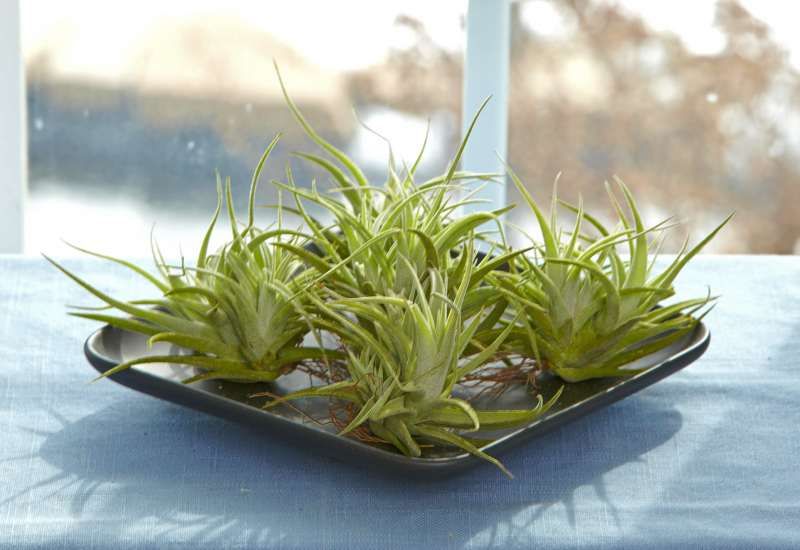
Via: bhg.com 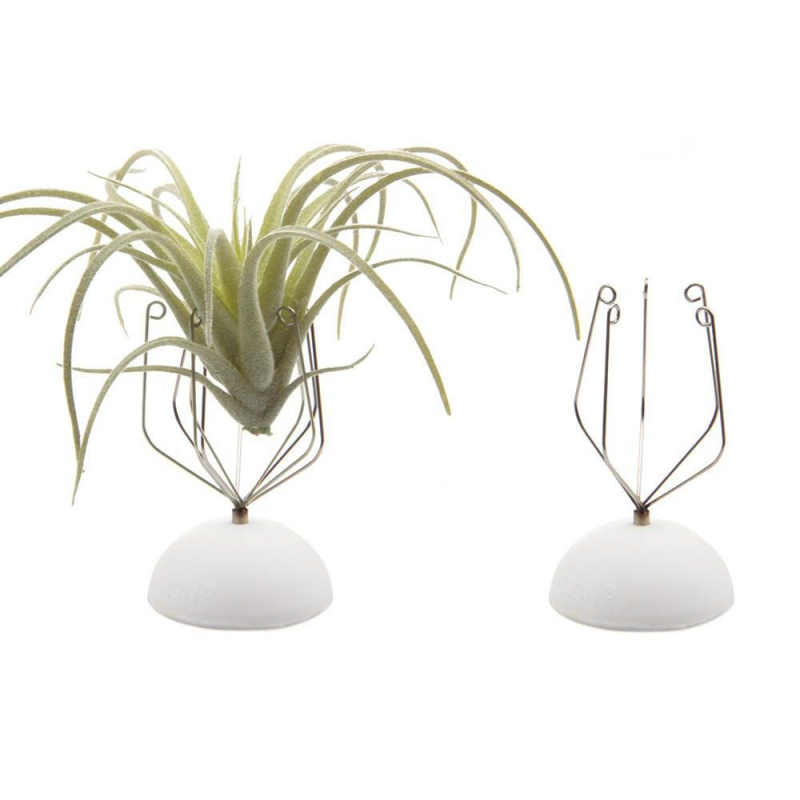
Via: csgcl.com -
Unlike other cacti, the Christmas cactus (Schlumbergera x buckleyi) and its relatives don’t live in hot, arid environments such as deserts or plains. In fact, these epiphytic succulents are native to the tropical rainforests of southern Brazil, where they grow on tree branches and soak up the high humidity, dappled sunlight, and warm temperatures.
Christmas cacti are nontoxic plants to have around curious cats and dogs. You still shouldn't let your pets chew on it (Christmas cacti can cause intestinal discomfort if eaten) but overall it's a safer choice than many other festive plants. Christmas cacti can easily be confused with Thanksgiving cacti, but both are safe for pets and have similar care requirements.
The bottom line: Don’t treat a Christmas cactus like it’s a run-of-the-mill cactus or succulent. They can’t take the same sort of sunny, dry conditions that other cacti can. It’s important to water these cacti more regularly than most succulents, but to also be cautious of keeping them too wet.
Appearance: Stems that resemble leaf-like pads joined one to the other and flowers that appear from areoles at the joints and tips of the stems
Light Requirements: Indirect sunlightDifficulty: Moderate
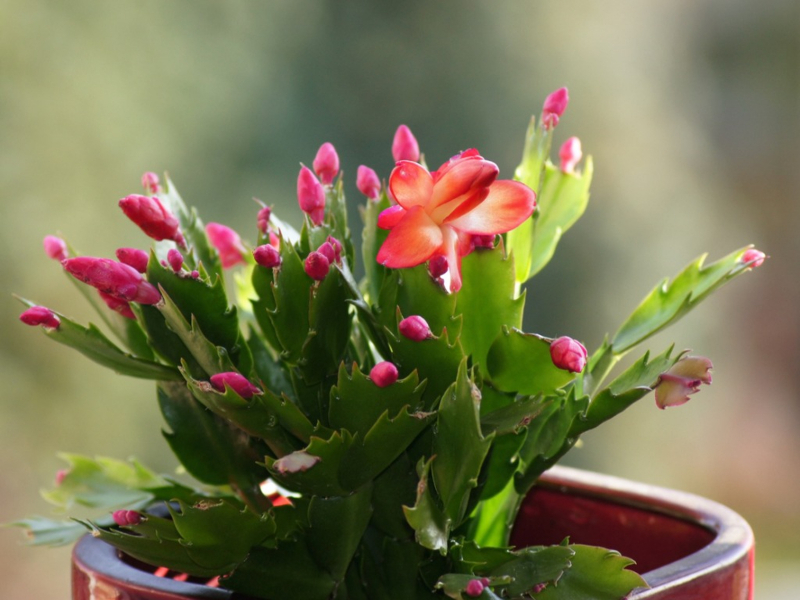
Via: Gardeningknowhow.com 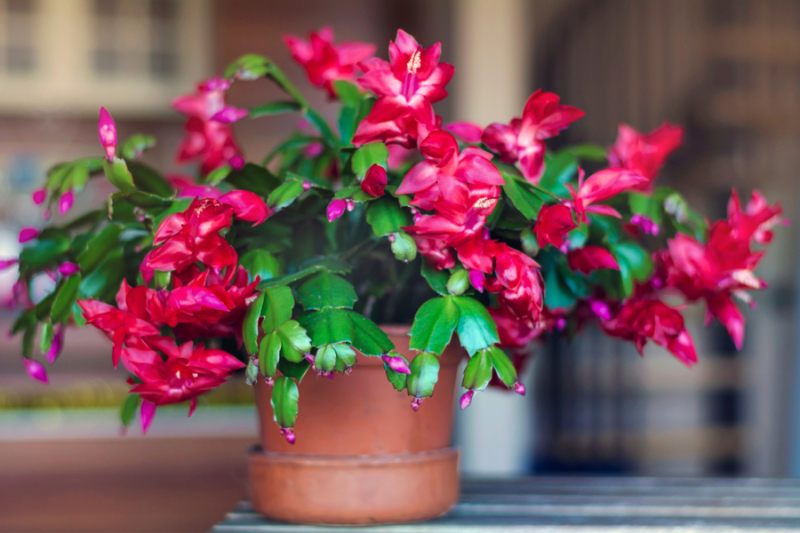
Via: bhg.com -
A lipstick plant is in the genus Aeschynanthus “pulcher” which means “pretty” or “beautiful” and refers to the vibrantly colored plant flowers. Just to confuse matters, a lipstick plant may also be classified as Aeschynanthus radicans. Lipstick plants were originally found growing in the tropical and subtropical regions of Malesia and Indochina. Although a relative of the somewhat finicky African Violet plant, lipstick plants are easy-care, indoor flowering houseplants that look beautiful hanging in a bright spot in your home.
This quirky plant is safe for cats and dogs alike (other members of the Peperomia family are, too). A native of the tropics, the lipstick plant thrives in bright light and loves being outside in the warmer months. It can grow up to 20 inches tall and likes to have consistently moist soil, so don't forget to water! If you want a graceful, draping plant that blooms off and on all year, a Lipstick plant is a great choice.
Appearance: Crinkly veined leaves
Light Requirements: Bright light for a portion of the day, but not all day long.
Difficulty: Easy
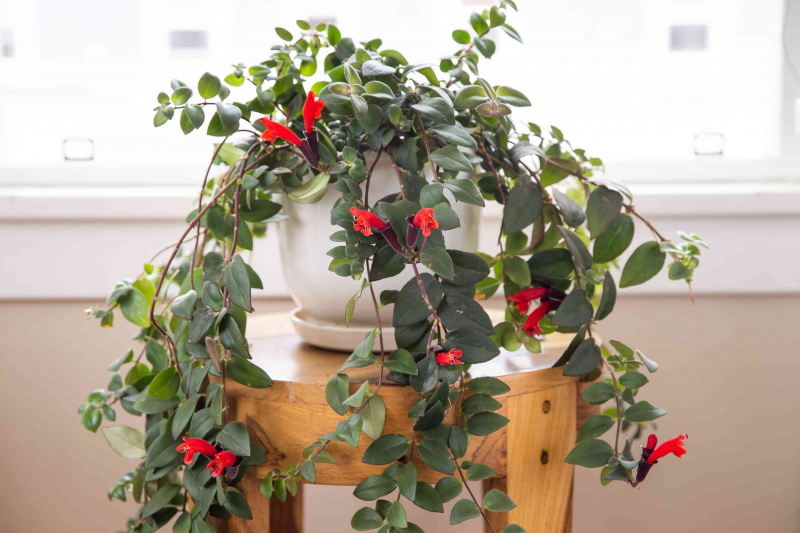
Via: thespuce.com 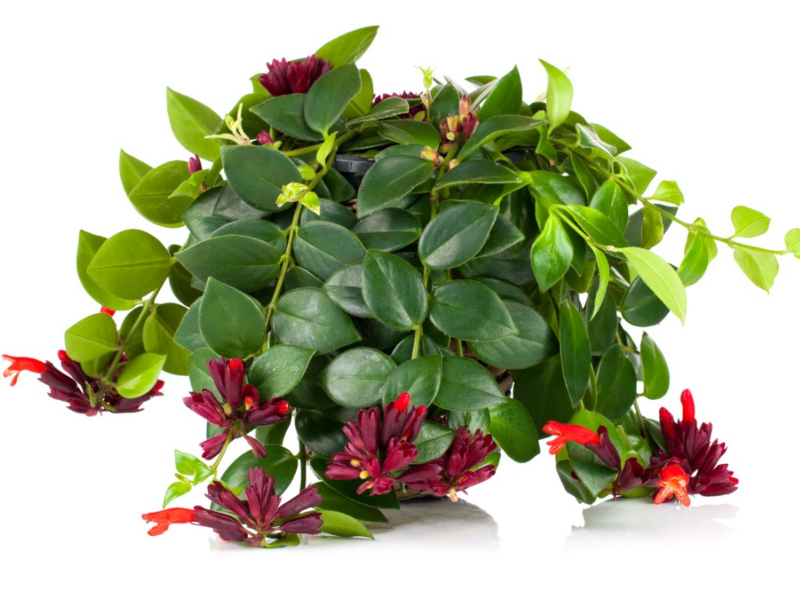
Via: Gardeningknowhow.com -
Unlike plants Peperomia is distantly-related to, they are grown not for food purposes, but for ornamental purposes. Their flower spikes lack a perianth, or petals and sepals, and instead are borne on a spike. The spike, or inflorescence, is an easy way to identify a blooming plant is from the Piperaceae. It might not be the most attractive flower, however, Peperomia plants are grown for their beautiful foliage, not their blooms. They are semi-succulent, adaptable, visual-appealing, and pet-friendly—all characteristics that make for suitable houseplants. Of the 1,000 species of peperomia plants, all are completely safe for cats and dogs. It is a resilient and durable little plant. Its leaves have a unique pattern, combining hues of green. It comes in several leaf variations, so you can pick your favorite of all - or maybe a few.
Peperomia has the ability to be propagated from any part of the plant, except for the roots. Stem, or even leaf, cuttings can root if given proper conditions, which makes it quite valuable in the horticultural industry. This ability is more common in more ancient lineages, but randomly; and whether or not it is an ancient characteristic, or just an evolutionary quirk remains to be known. Being relatively easy to grow, species of Peperomia have been sold as houseplants since the 1930s.Appearance: Green shades, ornamental leaves
Light Requirements: Bright, indirect sunlight
Difficulty: Easy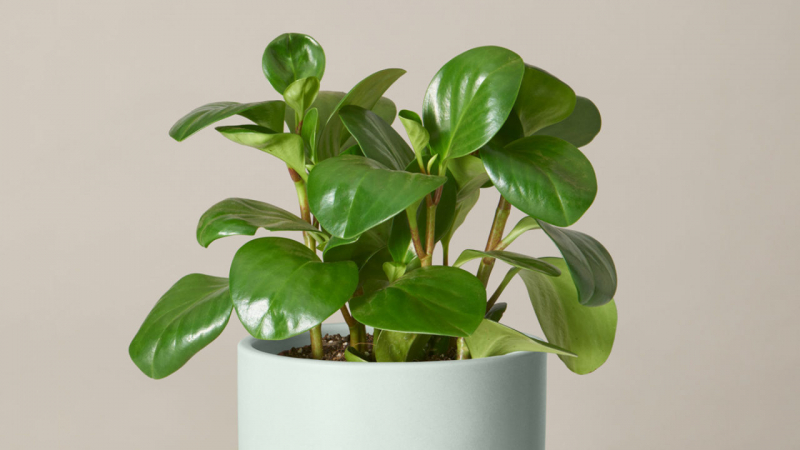
Via: sunset.com 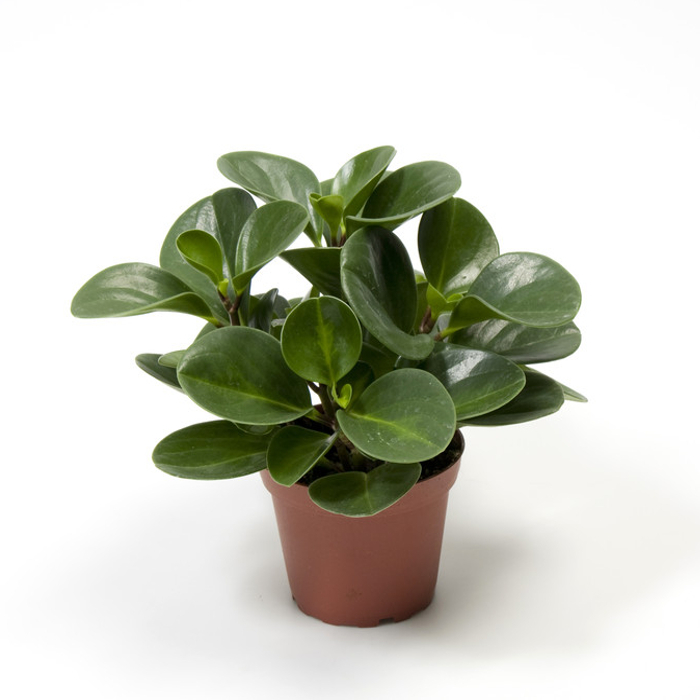
Via: Gardenhunt.com -
The spider plant (Chlorophytum comosum) is considered one of the most adaptable of houseplants and the easiest to grow. This plant can grow in a wide range of conditions and suffers from few problems, other than brown tips. The spider plant is so named because of its spider-like plants, or spiderettes, which dangle down from the mother plant like spiders on a web. Available in green or variegated varieties, these spiderettes often start out as small white flowers.
This pet-friendly houseplant is also super simple to grow more spider plants from the babies that the mother plant produces. Spider plant grows best in bright, indirect light, but it can tolerate low light, too. Let the soil dry between waterings, and your plant can grow up to 12 inches tall and 24 inches wide, and produce multiple baby plants.
Appearance: Sprawling leaves, non-flowering
Light Requirements: Bright indirect sunlight
Difficulty: Easy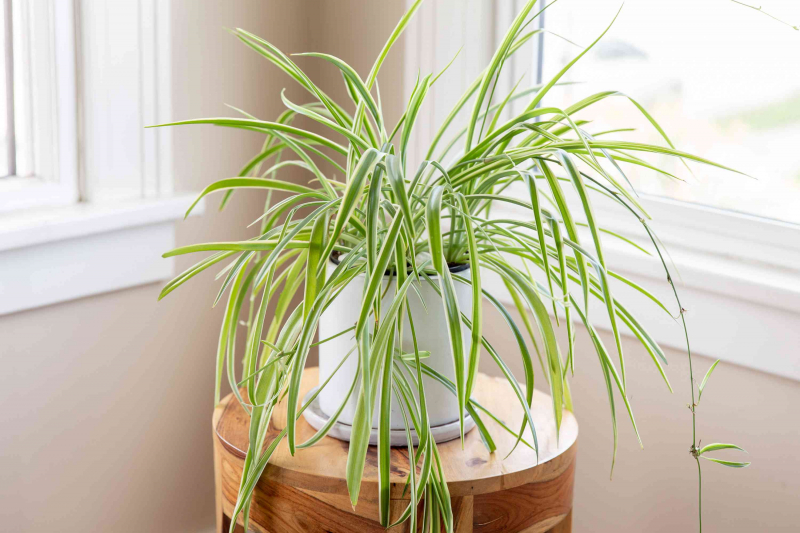
Via: Thespuce.com 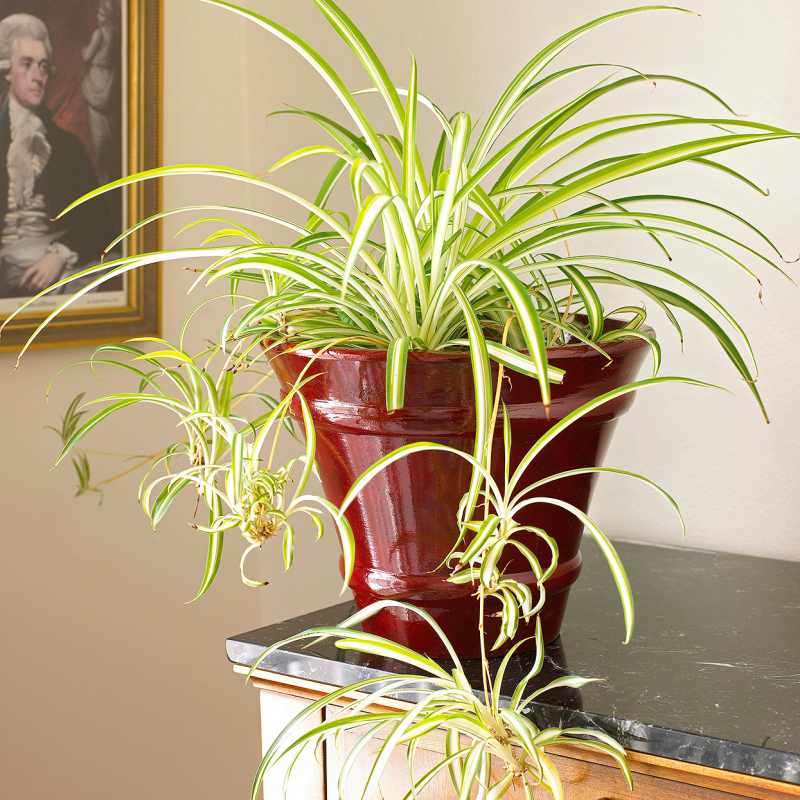
Via: bhg.com -
Ponytail palms aren’t actually palms at all, and are more closely related to lilies, but need the kind of care you’d give a cactus or succulent. Maybe it’s less confusing to stick with the scientific name of this native of southeastern Mexico, Beaucarnea recurvata, or one of the other common names, elephant-foot plant or bottle plant.
While ponytail palms can reach heights of 20 feet or more in the outdoors, they are also often grown as a bonsai specimens. They may produce flower stalks in the summer when grown outdoors. Under normal conditions indoors, though, they probably won’t flower, or reach more than about 3 feet tall.
The quirky ponytail palm tree is an elementary house plant that doesn’t harm your pets at all. It has a substantial base, so the trunk can store water for long periods. This plant is an excellent pick for someone who forgets to water houseplants on a regular schedule. These plants regrow their leaf sprawls very easily, so if you have a few bitten off, you can bet they’ll regrow beautifully in no time.
Appearance: Thick base, winding leaves, green color
Light Requirements: Bright sun
Difficulty: Easy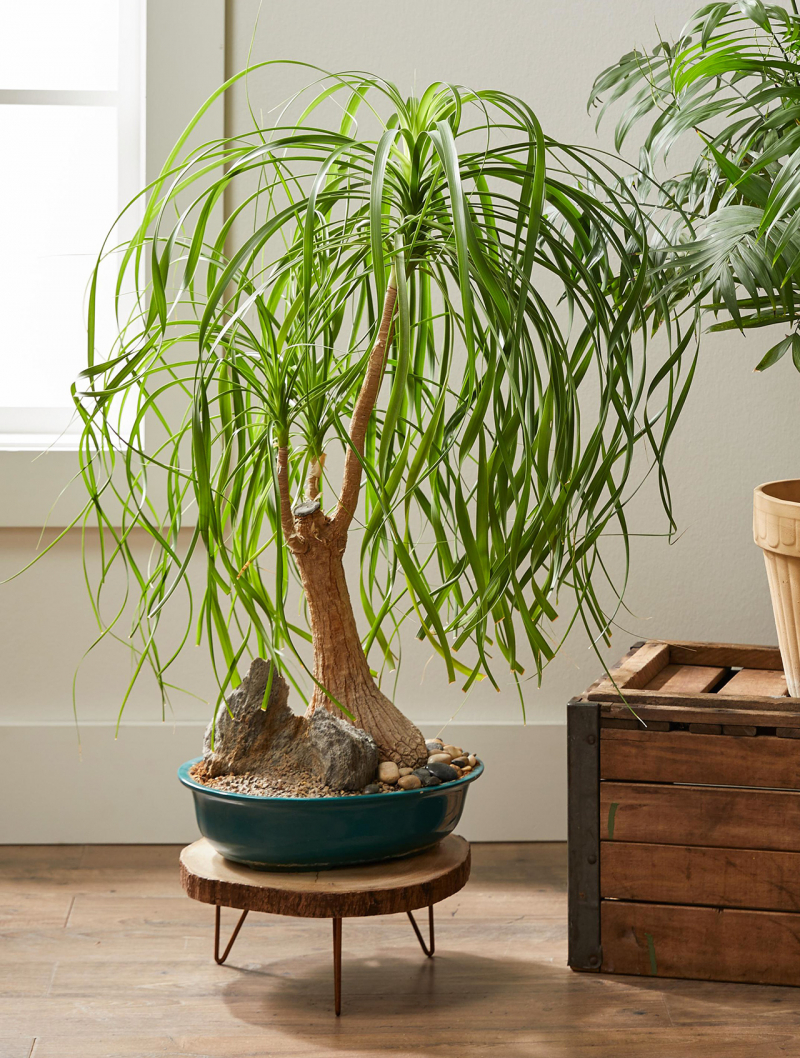
Via: bhg.com 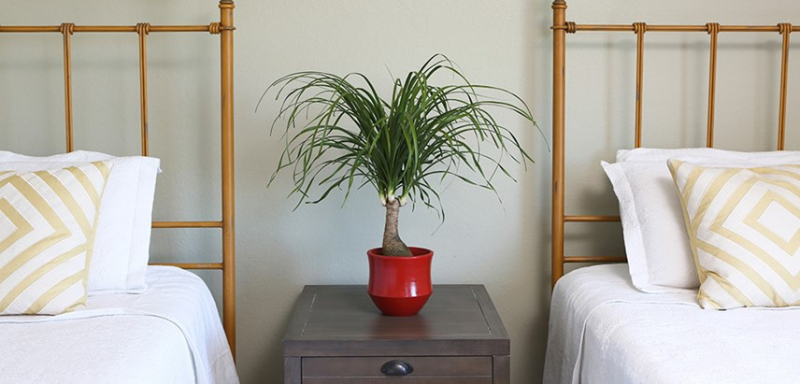
Via: costafarms.com -
Gerbera daisies (Gerbera jamesonii) are beautiful flowering plants known for their colorful blooms. The flowers come in many different vibrant colors, such as yellow, orange and red. As such, Gerbera Daisy is a popular houseplant for those who wish to make their homes more vibrant and beautiful. They're not only beautiful, but gerber daisies are also good for you, too. Gerberas are among the best plants for improving indoor air quality. They have one of the top removal rates of toxins such as formaldehyde and benzene from tainted indoor air.
This genus of daisy is incredibly easy to grow indoors and totally safe for any fury pals around. You can buy these flowers in various shades of yellow, pink, orange, red, lavender, and white. You can grow these beauties directly from seed, or you can buy one that already has a head start.
Appearance: Tall stalks, colorful blooms
Light Requirements: Bright, indirect sunlight
Difficulty: Moderate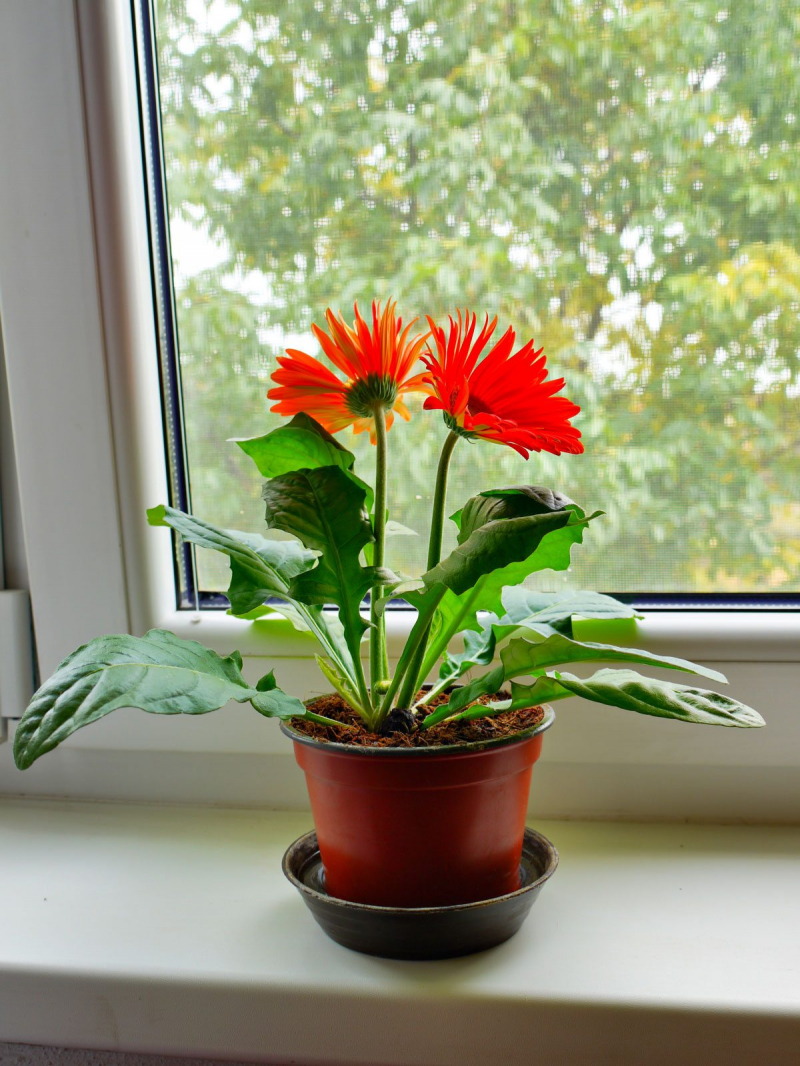
Via: Gardeningknowhow.com 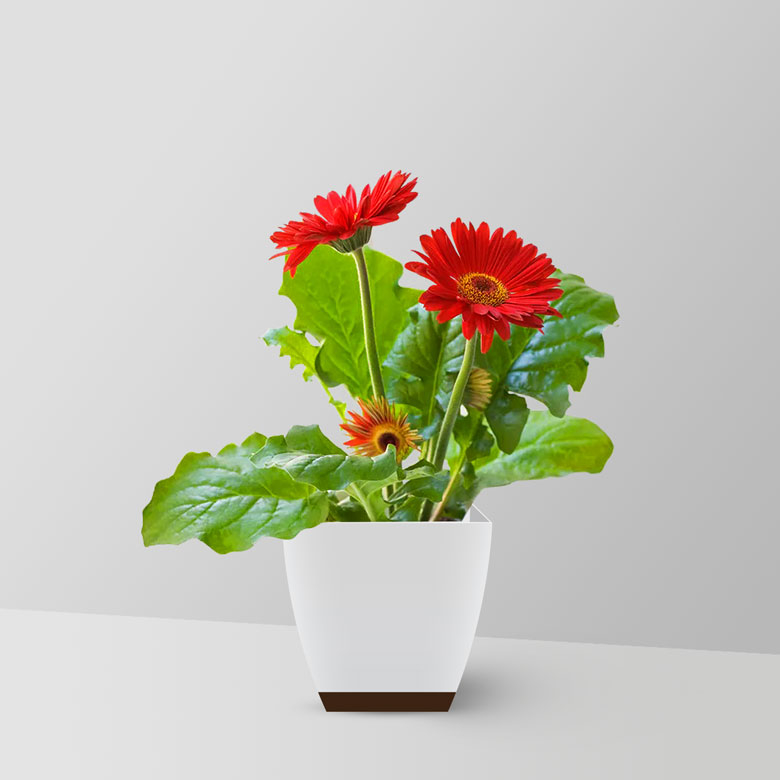
Via: Bhg.com -
Orchids are popular houseplants and although there are countless species, they all have similar physical characteristics. Orchids are easy to spot because of their arcs of branches, called spikes, covered with softly colored blooms in solid colors or speckles. Their petals and sepals (innermost petals) are typically found in groups of three. The bottom petal, usually called a lip or labellum, is shaped like that to host pollinators like bees if grown outdoors. Depending on the variety, an orchid's petals can have ruffled, shaped, or notched edges. Orchid leaves are coated with a heavy waxy film to prevent water loss. Some orchids are faster-growing than others which can require more frequent repotting.
Orchids are completely safe in homes with pets. They are a bit challenging to handle if you’re unfamiliar with houseplant care, but they can be very rewarding. If you want your orchid plant to grow upright, you’ll need to stabilize the stalks. You can also let an orchid vine across an anchored surface. You can buy them in many varieties, as the species is extensive.
Appearance: Vining, seasonal blooms, thick long leaves
Light Requirements: Bright, indirect sunlight
Difficulty: Difficult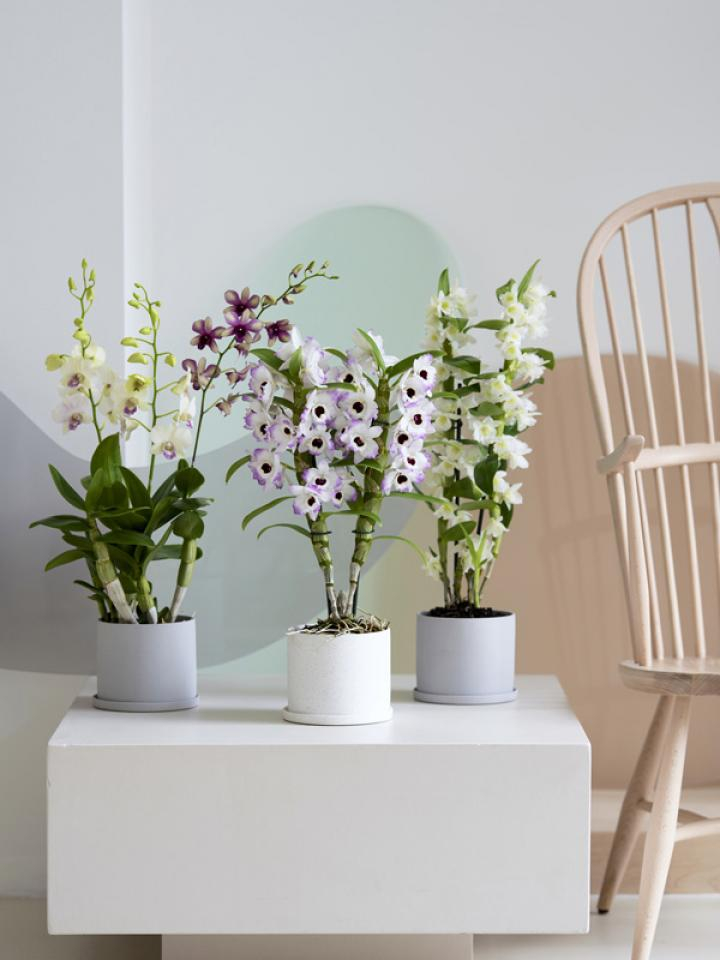
DENDROBIUM ORCHID (Via: thejoyofplants.co.uk) 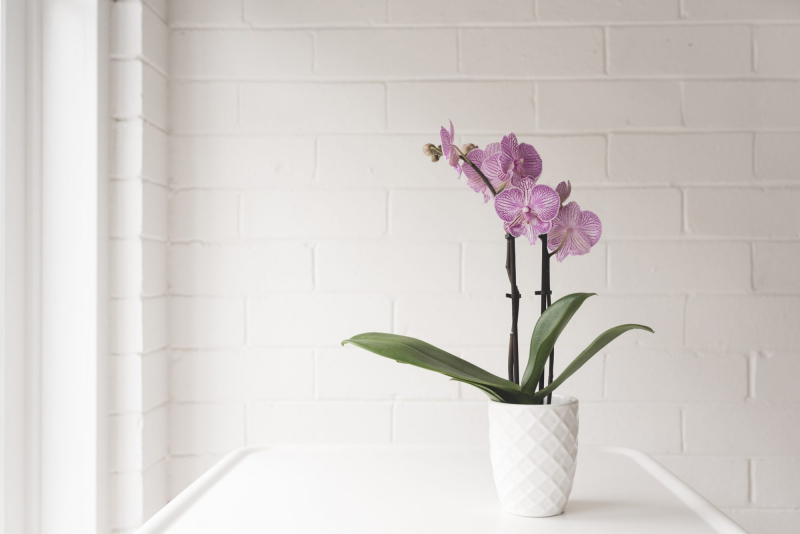
Via: bhg.com -
The Haworthia is a miniature succulent native to South Africa and is one of the easiest houseplants to care for. It is characterized by its architectural structure, typically solitary columns which form in layers, though this can differ widely between varieties and even within the same species.
A common Haworthia is characterized by its rosette-shaped, tightly packed leafy clusters. Some are firm, tough, and dark green, whereas other species are softer and even translucent. Those of the firm, dark green variety are typically dotted with white spots and can turn a rich hue of purple-red when exposed to full sun. In addition to being pet-friendly, these plants are also closely related to aloe. It has some of the same healing properties, like soothing cuts, burns, and rashes.
Appearance: Fleshy leaves, lined patterns
Light Requirements: Bright, indirect sunlight
Difficulty: Easy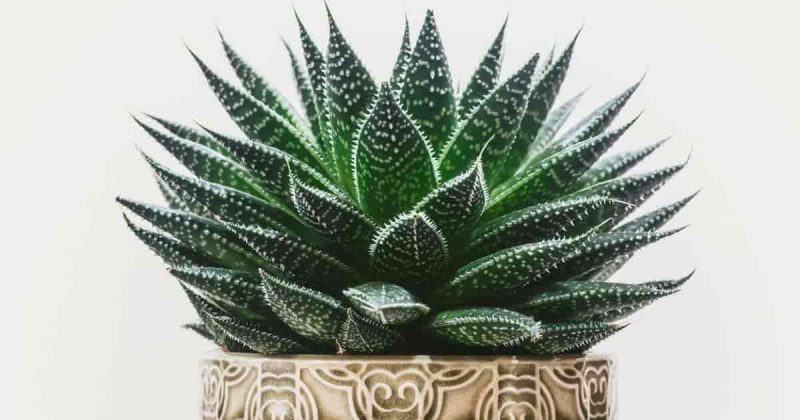
Via: Plantcaretoday.com 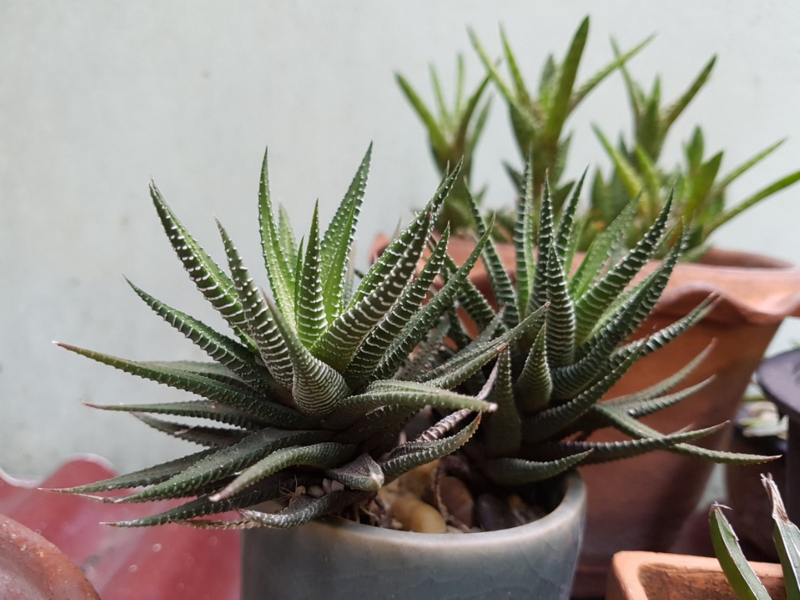
Via: Gardeningknowhow.com














